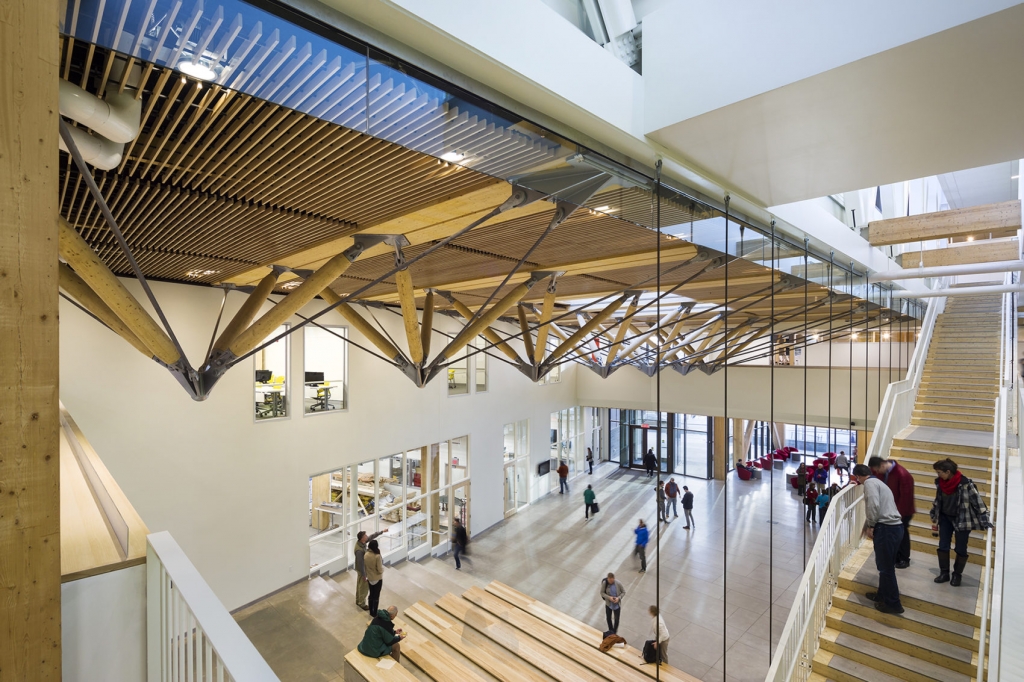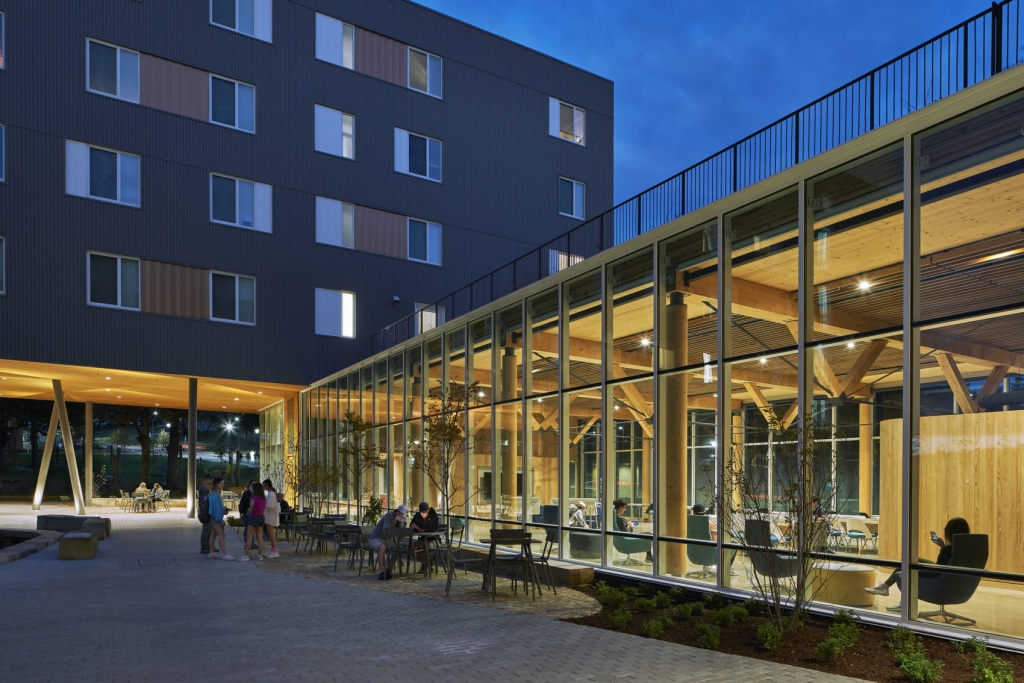Guest Blog By Tom S. Chung, AIA LEED BD+C
Principal and Design Leader, Leers Weinzapfel Associates

University of Massachusetts, Design Building, Location: Amherst MA, Architect: Leers Weinzapfel Associates
Even as the challenges of climate change continue to dominate the news, a set of technological revolutions in design and materials science offers renewed hope.
While the transportation sector is a major source of carbon emissions, tackling climate change also means re-examining how buildings are designed, built and operated.
That’s because the construction industry produces roughly 40 percent of global carbon emissions – more than even the transportation sector.
In recent decades, two different technological developments have coincided that could substantially improve the way in which buildings are constructed.
The first is the digital revolution, which allows for the design and building of complex wooden structures. Advanced computers and software combined with precision Computer Numerical Control (CNC) machinery now make it possible to create buildings that would have once been well outside timber’s capabilities. The second is an advance in materials science and, specifically, the development of mass timber fabrication.
Mass timber is a relatively new category of pre-fabricated, engineered wood product that’s larger than the traditional light-frame (two-by-fours) used to frame many residential homes.
While mass timber products like Glue Laminated Timber (Glulam) have been around for over 75 years, new mass timber products such as dowel-laminated timber (DLT), cross-laminated timber (CLT), and mass plywood panels (MPP) employ high-pressure techniques and high-tech structural adhesives or hardwood dowels to combine separate layers of wood together to form large mass timber panels to create floors, roofs and walls.
These engineered products are similar to concrete and steel in strength and versatility; they’re fire-resistant given the phenomenon of charring; they can be used to build complex wood structures that in the past could not have been contemplated. And because panels of mass timber are manufactured in factories and can be pre-cut using computerized cutting machinery, they offer a new level of precision, quality and a lower carbon footprint.
Mass timber also reduces construction time, waste and noise on-site since much of the construction work is completed off-site and ahead of construction.
More important, wood is a renewable resource and therefore is quite distinct from other construction materials. Further, trees absorb carbon as they grow, and that carbon is stored in durable wood products, instead of released into the atmosphere. The embodied energy of mass timber — the amount of energy required to produce it — is also far less than most other building materials.

University of Arkansas Adohi Hall
And mass timber offers a unique aesthetic experience, providing the warmth and organic beauty of wood, which can, in turn, increase productivity and quality of life for a building’s inhabitants.
The use of mass timber from forests like those certified to the Sustainable Forestry Initiative’s (SFI) standards assures architects and builders they are choosing wood products from well-managed forests. This certification of sustainable forestry is key to using timber in innovative ways that create a healthier built environment. SFI, which supports conservation, education, and research, develops and manages rigorous, third-party audited standards for good forest management.
The world of construction and design is innovating, and is recognizing mass timber may be the only structural material that, when widely adopted, can dramatically alter the course of climate change for the better.
The wide adoption of mass timber could provide a substantial economic boost to rural populations who grow, harvest and mill the timber to meet the growing urban demand for sustainable buildings as our cities grow. Wide usage of mass timber could bridge a rural-urban divide that has led to much socio-economic and political tension in recent times.
We have a long way to go before mass timber is adopted widely throughout the nation. Still, mass timber offers a revolutionary means of better building design and the hope of a more sustainable world.
Tom S. Chung, AIA LEED BD+C, is a principal and design leader at Leers Weinzapfel Associates and has taught mass timber design studio at Auburn University and currently teaches graduate architecture studio at Wentworth Institute of Technology in Boston. His mass timber projects include the Olver Design Building at UMass Amherst and Adohi Hall at the University of Arkansas.

